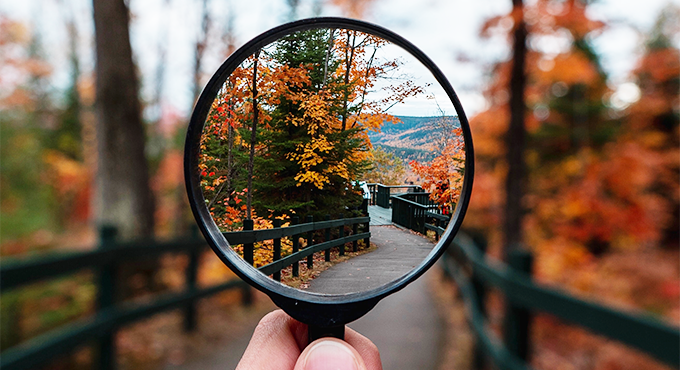News

Summary of Report on Air Transport and Sustainable Development
Air transport has long been attacked due to its impact on the environment, increasingly so in recent times. The emblematic movement behind these attacks has materialised on social networks under the name of flygskam, which literally translates from the Swedish as "flight-shaming". Now, mainly in Europe, we are witnessing a real witch-hunt, which is completely irrational and stigmatises air transport and its environmental impact.
For the 24,000 graduates from ENAC (France's civil aviation school), this stigmatisation of air transport is incomprehensible. Although air transport, just like all human activity, is contributing to global warming, its impact is limited to 2% of global CO2 emissions from human sources and only 10% of emissions from other modes of transport. As such, it contributes much less to global warming than sea or road transport. The relative proportion of air transport CO2 emissions has not changed for decades, despite a continued increase in business. This figure alone, if there were any need for it, shows that few industries have made as many efforts to decrease their carbon footprint and combine growth and environmental protection in harmony. Air transport had been doing this well before the advent of sustainable development as a concept.
After the initial stupefaction, it seemed important to the ENAC Alumni organisation to provide rational and scientific information to the debates on sustainable air transport with full transparency.
The meeting with representatives of the nation, which took place at the National Assembly on 16 October, is one component of this effort to inform about the relationship between air transport and sustainable development.
In the preamble, we were reminded that air transport, despite the fact that it is a significant economic activity for France (4.3% of GDP, 32,000 direct jobs and 1.1 million indirect jobs) is, first and foremost, a tool for bringing people together, reciprocal understanding and discussions between peoples and cultures. Incidentally, the annual number of passengers worldwide is around the same as the number of people connected to the internet: 4.4 billion, whilst digital business generates twice as many CO2 emissions from human sources than air transport.
It was highlighted that air transport, which is also a tool for opening up regions and enhancing their economic effectiveness, has been considering environmental aspects, and global warming in particular, from very early on. Therefore, since the advent of commercial air transport, technological progress has specifically enabled CO2 emissions to be reduced by 80%, NOx to be reduced by 75% and noise pollution from aircraft to be reduced by 75%. No other industry has made such a commitment to reducing its carbon footprint and air transport stakeholders are still just as determined to keep taking these environmental measures in the future.
As such, air transport has set up a global offsetting and carbon emission reduction tool. This tool, CORSIA (Carbon Offsetting and Reduction Scheme for International Aviation) is a programme adopted in October 2016 via a resolution of the ICAO (International Civil Aviation Organisation), ratified by 191 states. It will contribute to a growth in carbon neutral air transport from 2020, part of a first set of measures with three main drivers:
Technological progress, operational procedures and the development of alternative sustainable fuels, with the main benefit of preventing land eviction and competition with the food chain. In this respect, we were reminded of the urgent need to create an alternative sustainable fuel production industry.
Air transport stakeholders have started to actively define this set of measures. Airbus, the aircraft manufacturer, is therefore investing around 3 billion euro in research and development every year to enhance the environmental performance of its aircraft. This research has been successful as the latest generation Airbus aircraft consume 20% less fuel and 30% less NOx than the previous generation aircraft. New generation aircraft enable fuel consumption of around 2 litres of fuel per passenger for every 100 km, which is already better than a car with two or three passengers. Airbus is also continuing its research efforts in the area of hybrid, electric and hydrogen propulsion.
With the same aim of reducing their carbon footprint, airlines are using electricity for parked aircraft operations and are actively looking into the electrical taxiing of their aircraft at airports. They are also active in the acquisition of aircraft that create less pollution and in offsetting their CO2 emissions. For this reason, Air France is offsetting emissions for European flights via the ETS (Emission Trading System) and for international flights via the CORSIA programme.
The airline is also offsetting all of its domestic flights. In other words, the CO2 emitted by aircraft engines for Air France's domestic flights is fully absorbed by CO2 capturing tools funded by the airline.
Air traffic controllers are also fighting against climate change. They are trying to find the shortest routes for aircraft and the best flight levels for fuel consumption. They are increasingly developing continuous descent procedures into airports, which involves having the aircraft land with minimum engine power, thus reducing fuel consumption and noise pollution for locals (notably by eliminating a degree of horizontal flight and the associated increases in thrust).
Although they generate much less CO2 than other air transport stakeholders (5% of all air transport CO2 emissions), airports are also fully involved in the fight against global warming. For this reason, they are collectively committed to a zero carbon emission goal by 2050. To reach this goal, airports are massively investing in the electrification of their business activities, making their fleets of vehicles more environmentally-friendly and developing soft transport modes or public transport for passengers to access the airport. The ADP group is even committing to fully offsetting the CO2 emissions due to the daily commutes of its employees.
Air transport stakeholders' commitment to sustainable development is not limited to climate change. They are also very heavily investing in much social and environmental action such as the circular economy, protecting biodiversity and recycling waste and aircraft at the end of their service lives.
Thanks to the discussion with our elected representatives, they were able to see the determination of the aviation community, which is committed to continuing to reduce its carbon footprint by achieving carbon neutral growth from 2020, producing aircraft using new energies (electric or hybrid) from 2030 and halving CO2 emissions compared to 2005 by 2050.
















No comment
Log in to post comment. Log in.